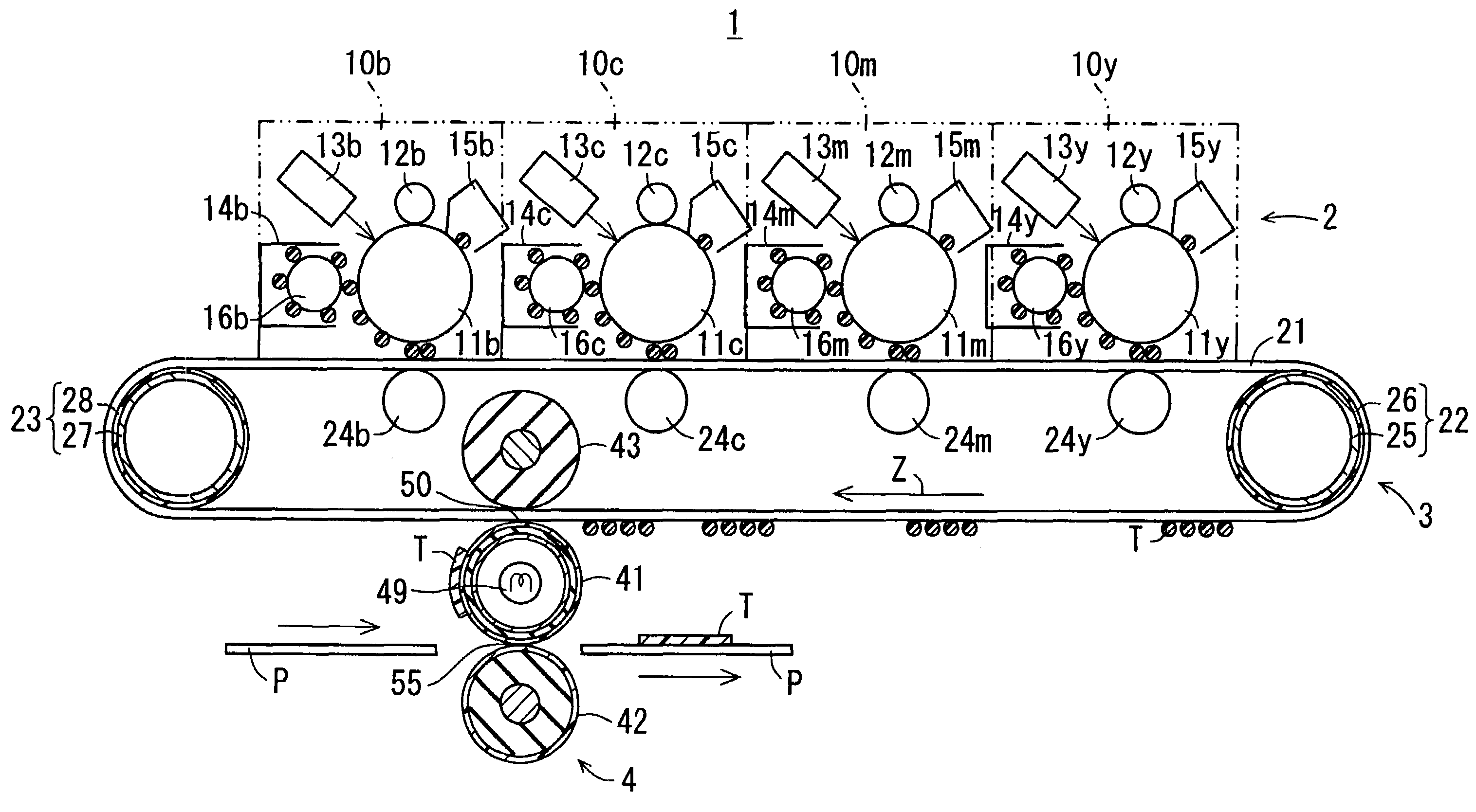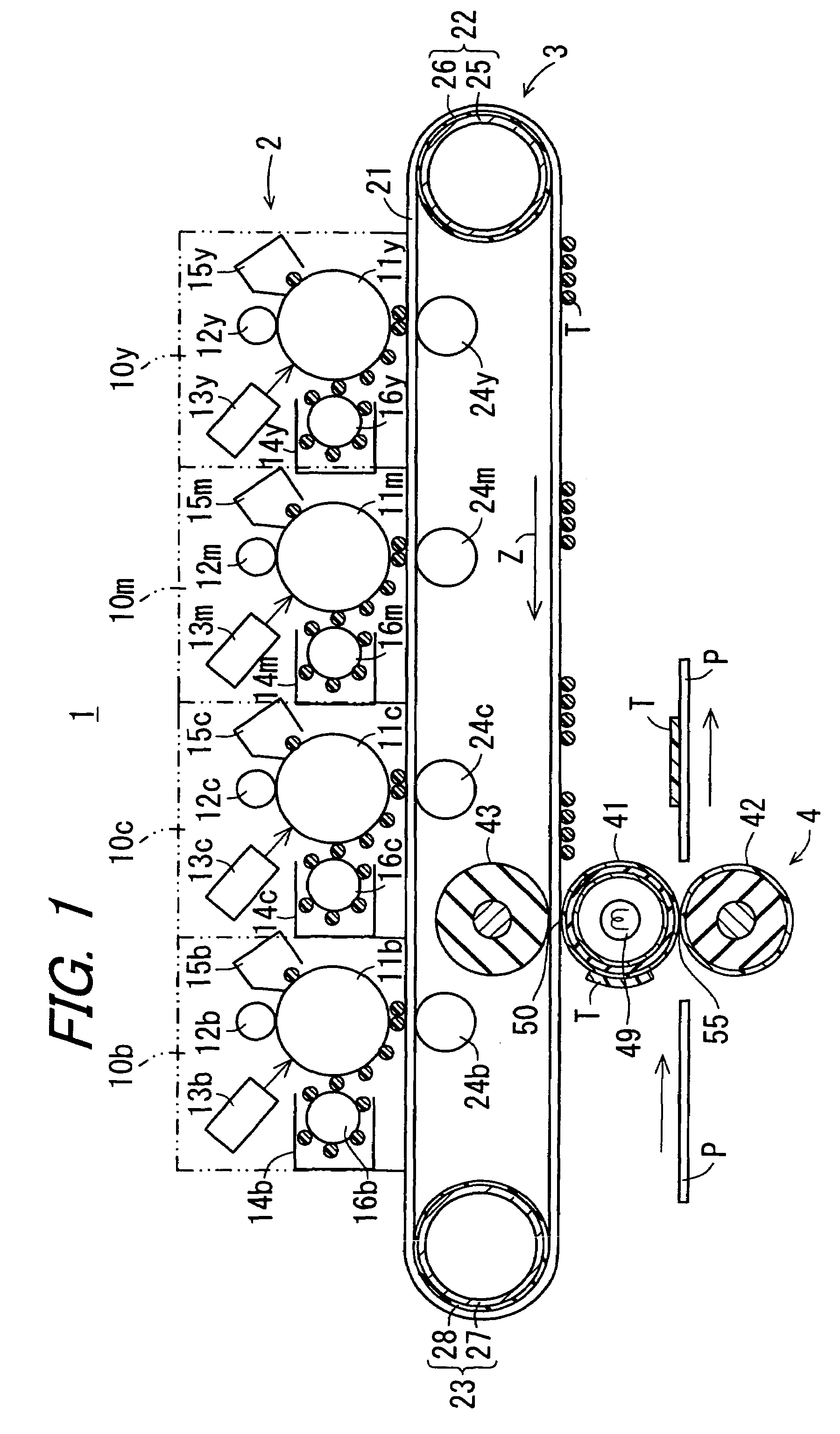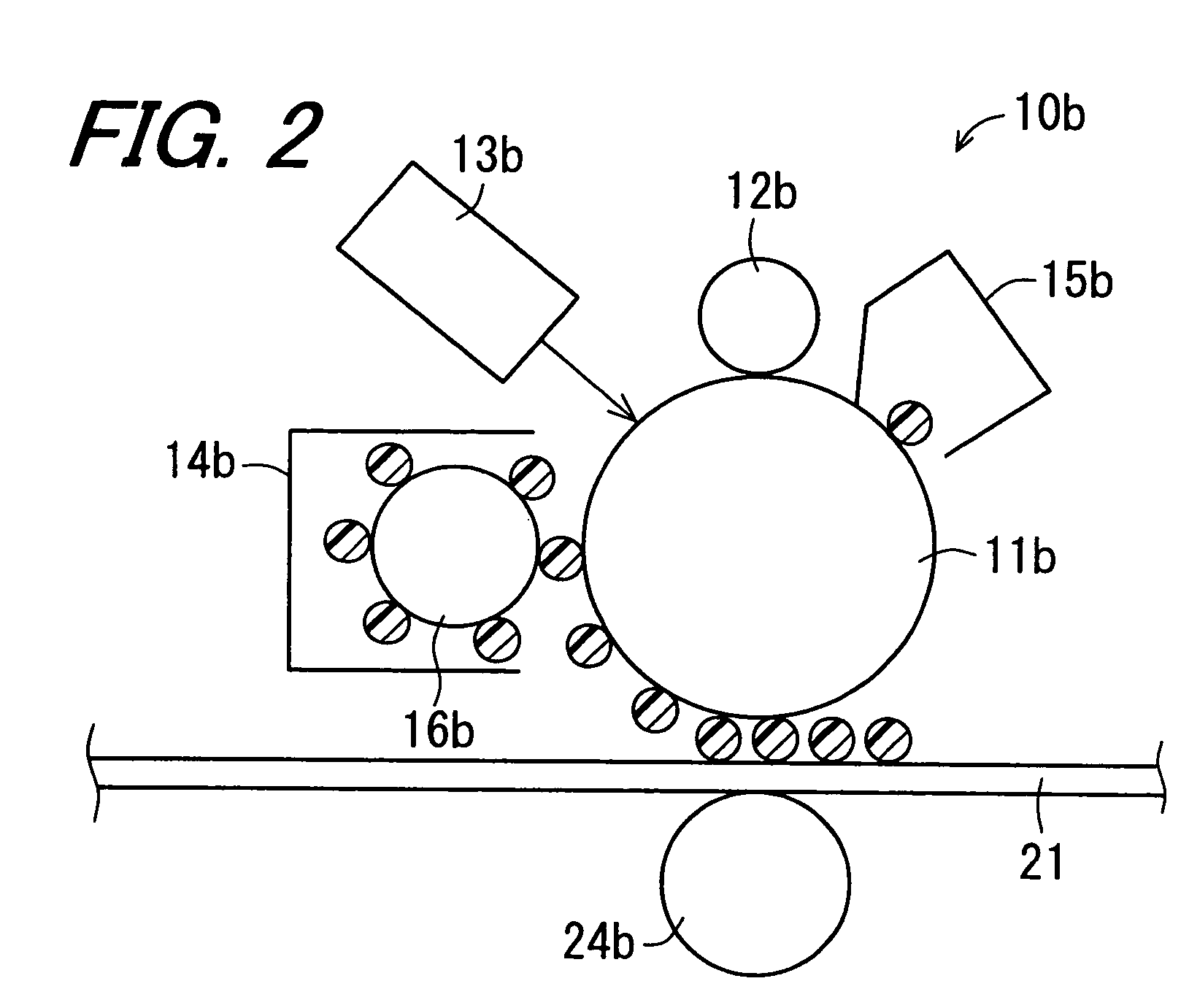However, the technique disclosed in JP-A 63-34572 has a problem as described below.
In a case where
silicone RTV is used as a material of a
surface layer of the transfer medium, when toner is transferred from the primary transfer medium to the secondary transfer medium by
thermal transfer, the toner is likely to stick and remain on the
silicone RTV surface of the primary transfer medium, and division of toner, namely, toner offset occurs at a nip area between the photoreceptor belt and the primary transfer medium, because toner releasability of
silicone RTV is insufficient.
In a case where division of toner, namely, toner offset occurs, part of the toner remains on the primary transfer medium, and toner for forming a toner image later gets short, with the result that there arises a problem such that
image quality decreases.
Moreover, also when a toner image is transferred from the secondary transfer medium to a recording sheet, because of the insufficient releasability, toner offset occurs, and toner remains on the secondary transfer medium, with the result that there arises a problem such that
image quality significantly decreases.
However, in a so-called two-stage transfusing
system as disclosed in JP-A 63-34572 that thermally transfers from the photoreceptor belt to the primary transfer medium and then from the primary transfer medium to the secondary transfer medium and thereafter transfers and fixes to a recording sheet, there is an
adverse effect by application of the
silicone oil, that is a problem of oil
contamination of the photoreceptor belt and a developing portion with the
silicone oil.
The cause of the above is that due to contact of the primary transfer belt and the photoreceptor belt with each other, the oil reaches the photoreceptor belt from the primary transfer medium and adversely affects formation of an electrostatic
latent image and formation of a toner image at the time of development.
Further, since the oil also reaches the inside of a development tank through the photoreceptor belt, there is also a problem such that a failure in development is induced.
There is another
adverse effect such that due to existence of the
silicone oil having good releasability at a nip area between the primary transfer medium and the secondary transfer medium, the secondary transfer medium acquires high releasability from the silicone oil, and
thermal transfer of toner from the primary transfer medium to the secondary transfer medium in a good condition is impossible.
That is to say, there is a problem such that a
thermal transfer property is significantly impaired.
In the case of using a developer to which a
release agent is added and obtaining desired releasability, it is actually difficult to use a surface material other than PFA.
Since the silicone RTV illustrated as an example of the material of the surface
layers of the primary and secondary transfer mediums in the technique disclosed in JP-A 63-34572 has poor releasability, it is presumed that decrease in
image quality due to the poor releasability occurs on the primary transfer medium or on the secondary transfer medium even if a developer into which a
release agent is added is used.
Further, the technique disclosed in JP-A 63-34572 also has a problem as described below from the perspective of
power saving.
However, generally, in the case of using the high-speed process as described above, the maximum
power consumption far exceeds 1.5 kVA (100V, 15 A) that is an allowable limit of
electric power of a commercial power source.
Power consumption of a fixing portion forms the largest proportion in the details of
power consumption of an image forming apparatus, and it is necessary to set a fixing temperature high in order to prevent occurrence of toner offset when continuously printing a plurality of sheets at a high speed, with the result that the
power consumption tends to further increase.
Further, since the number of sheets of
image formation per unit time is large in the case of the high-speed process, heat of the surface of the fixing roller is removed by recording sheets while the recording sheets are continuously passing, the temperature of the surface of the fixing roller rapidly decreases, and it takes long hours before the temperature returns to a predetermined fixing temperature.
In short, there is a problem of so-called decrease of a heat follow-up property.
In a case where the heating roller has a large
diameter of 120 mm, a space between the
halogen lamp and the Al core
metal serving as a roller core
metal is too large, and hence,
heat transfer efficiency is bad, and it takes much time to increase the temperature.
Further, since a surface area of the secondary transfer medium is large, the amount of heat radiated from the secondary transfer medium into the air is large, and heating loss is large.
Accordingly, use of a large-
diameter roller as in the technique disclosed in JP-A 63-34572 runs counter to energy saving because loss of
electric power increases, and causes a problem such that the aim of adoption of a transfuse
system to fix at a high speed with small power consumption is not fully achieved.
Further, since a time required for transfer of a toner image is short in the high-speed process,
transfer efficiency is as low as 85% to 95%, the efficiency of use of toner is bad, and the amount of waste toner is large, which leads to a lot of waste.
 Login to View More
Login to View More  Login to View More
Login to View More 


